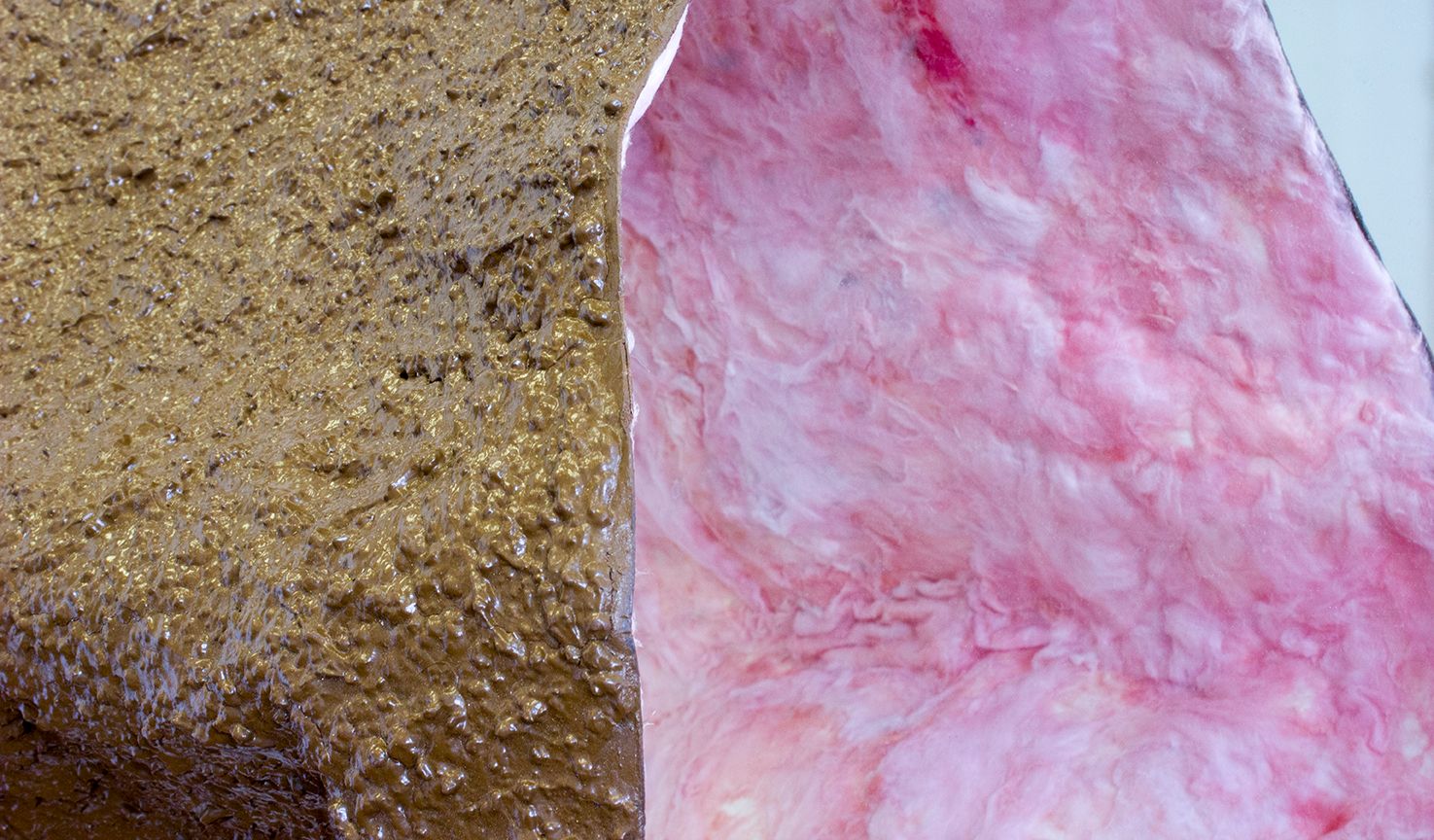For the Art Basel online platform, we are pleased to present a newly expanded series by cameron clayborn, accompanied by a selection of recent works of Sonia Almeida and Baseera Khan. United by their ongoing explorations of the symbolic and political associations of public and private spaces as well as their engagement in moments of presence and absence, this grouping of works by Almeida, clayborn, and Khan weaves poignant personal and societal subjectivities with nuanced histories.
cameron clayborn’s investigations are materially rooted, and combine elements of Minimalism, craft, performance, and spirituality. Their practice addresses the complexities of Black, queer, subjectivity and the relationship vulnerability has to power. clayborn’s vinyl cushioncontainerbag sculptures activate the surrounding space by suggesting bodies through their absence and show their interest in the connotative possibilities of a sculpture’s texture and mass. These sculptures are often made using direct measurements taken from parts of their own body, or from the bodies of those close to them. For the Art Basel online viewing rooms, clayborn has expanded this ongoing series by including related wall works and oil pastel drawings. For example, a shedding (2020), is a three-dimensional wall work made from everyday building materials such as pink insulation, heavy-duty paper, and brown stucco ceiling paint. It simultaneously confronts the architectural environment as well as makes associations to clayborn’s skin and flesh, which a shedding presents as at once ripped open and vulnerable yet defiantly present.
Sonia Almeida’s nuanced painting practice has investigated the deceptive powers of vision and the various manners in which communication systems break down. Her most recent paintings on marine plywood focus these urgent observations on the female body and its interaction with various architectures. These symbolic depictions, enriched by Almeida’s longstanding interest in Late Medieval imagery, are subtle and layered, enabling her to play with the visual and linguistic representations of figure and text in an abstracted setting. She has, for instance, employed motifs such as bricks, portals, and columns as semipermeable membranes that both reveal and obscure her distilled illustrations of feminine figures. These scenes are situated in a kind of impossible architecture of Almeida’s making, where a viewer is allowed only a partial view of the figures in question, not dissimilar to Clayborn’s own metaphoric suggestions. Almeida reveals how gestures, whether pictorial, bodily, or linguistic predicate thought and speech, and makes one’s identity a function of representational systems.
Baseera Khan’s practice uses the lens of her own body to investigate how subjectivity is shaped and threatened by social environments and capitalist systems. Khan’s ongoing collage series, My Family (2017-2020), combines personal photographs of family members with portraits of the few U.S. Representatives who are people of color. These images are overlaid with a floor plan of the Hall of the House of Representatives. As in Clayborn’s work, My Family interweaves intimate personal histories with a claim to space that has been historically inaccessible. Khan’s work exists at the intersection of Conceptualism, performance, sculpture, and feminism, and often references various subgenres of pop culture. The floor plan of the Hall of the House of Representatives is suggested with hole punched pleather that veils the photographs themselves, granting only a glimpse of the constituents behind it. Khan’s utilization of pleather suggests a radical re-contextualizing of the perception of one’s own skin. By locating her own body within societal visions of her subjectivity, Khan mirrors traditional symbolism to point out its inaccuracies.



